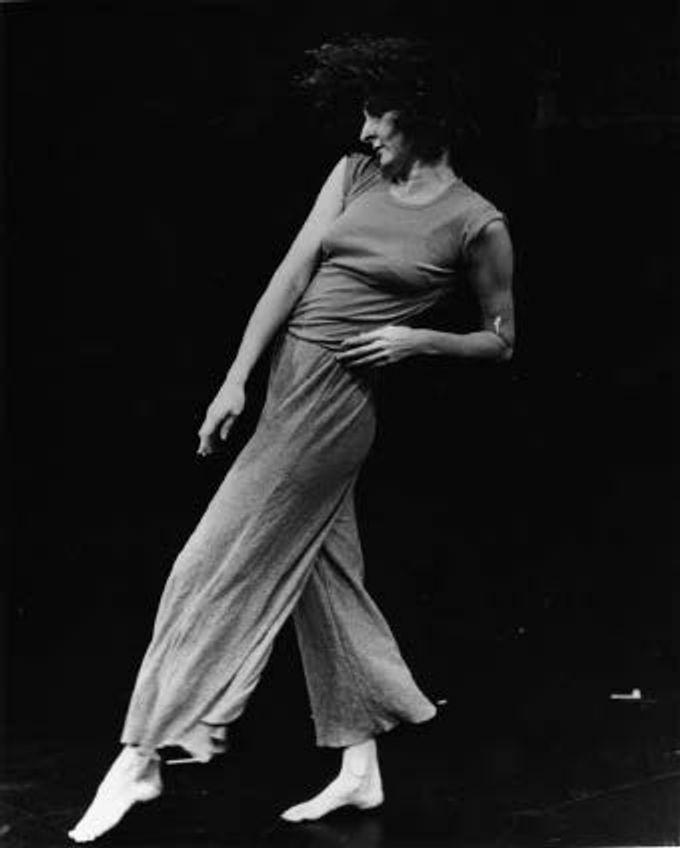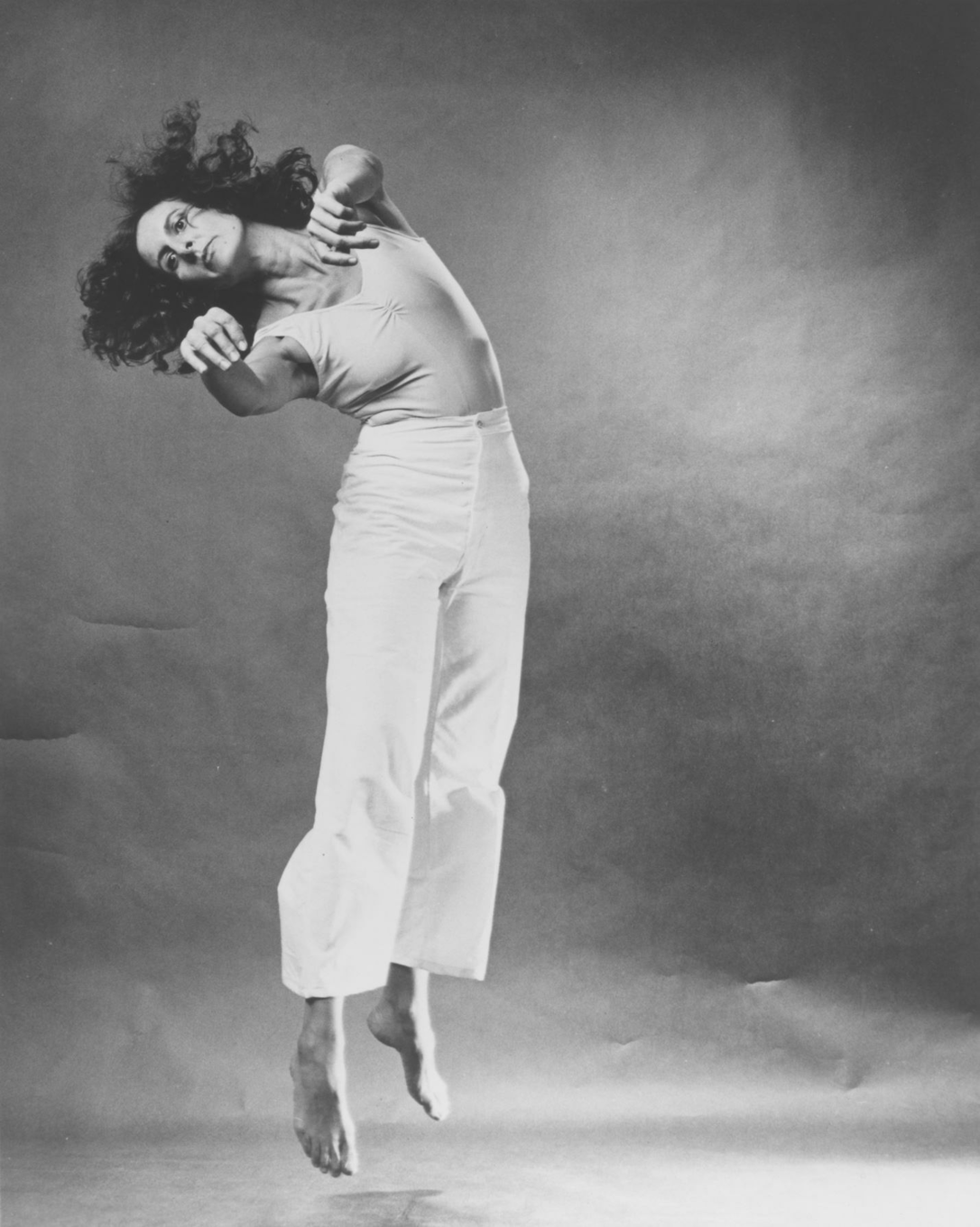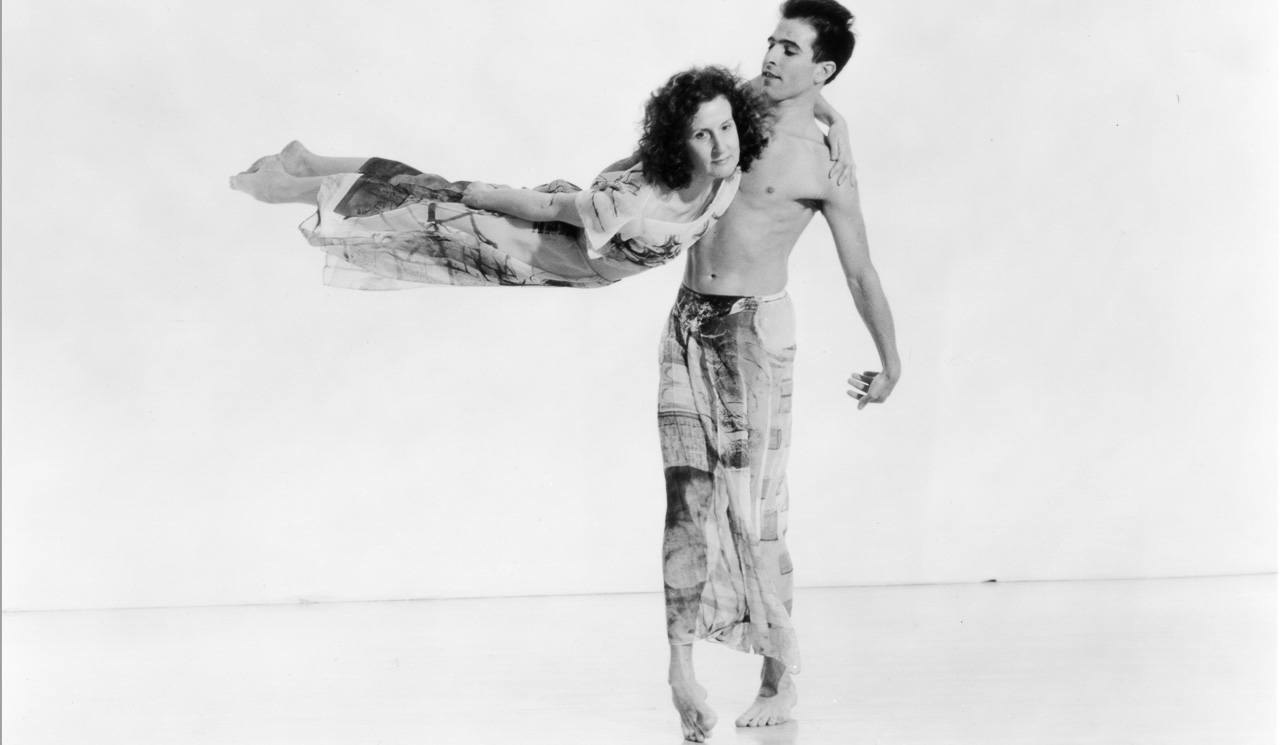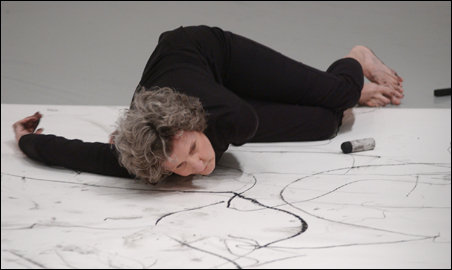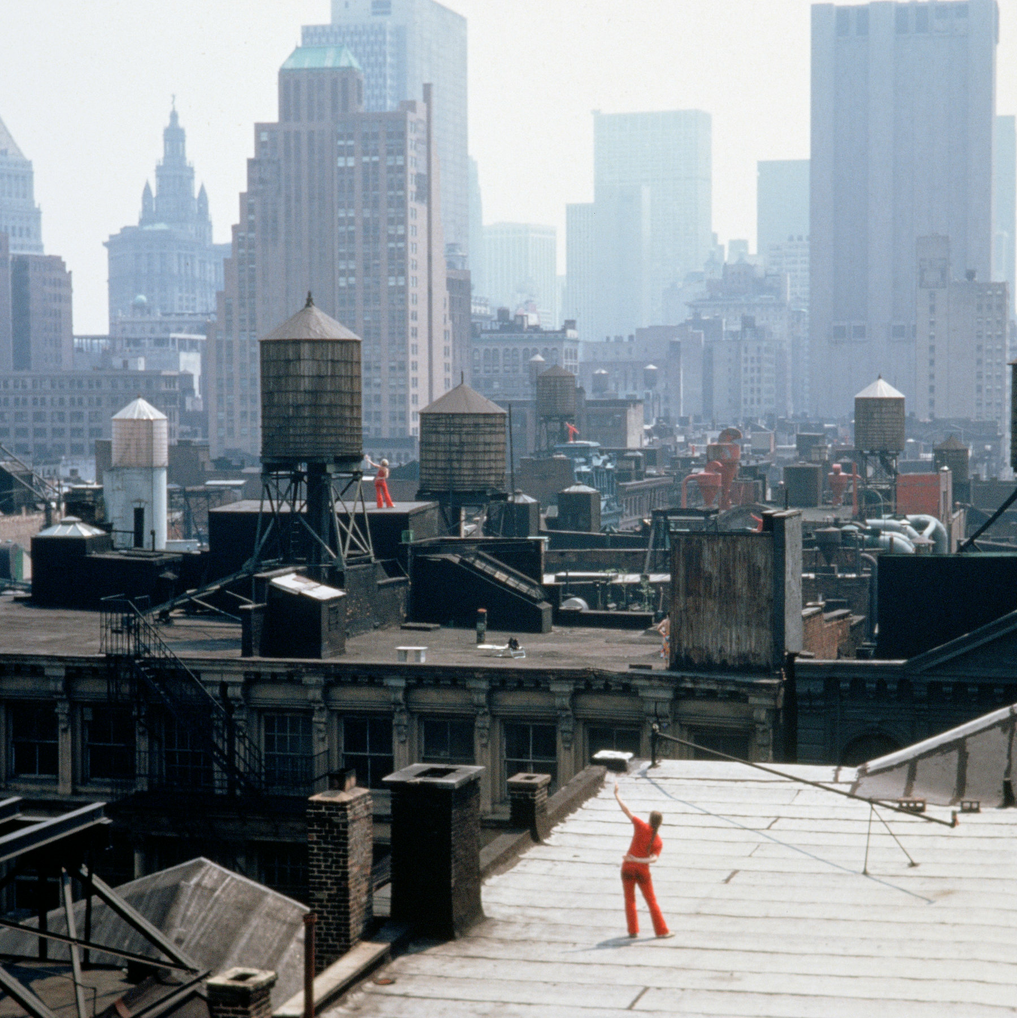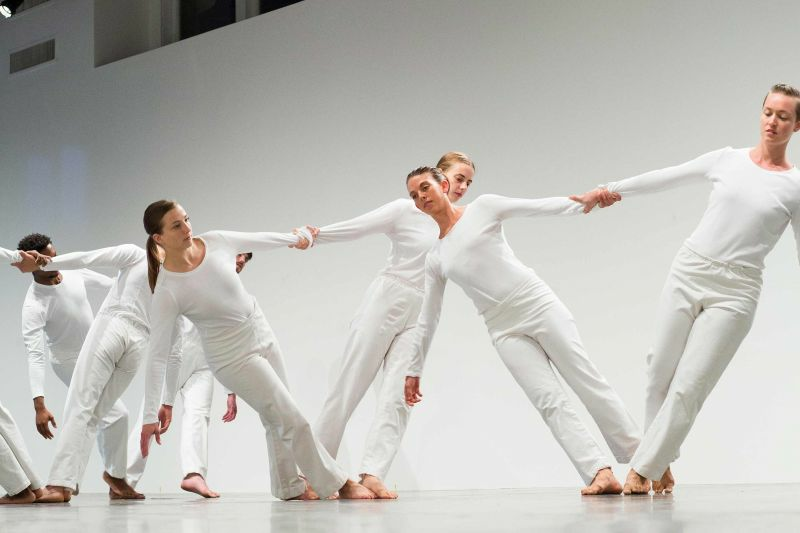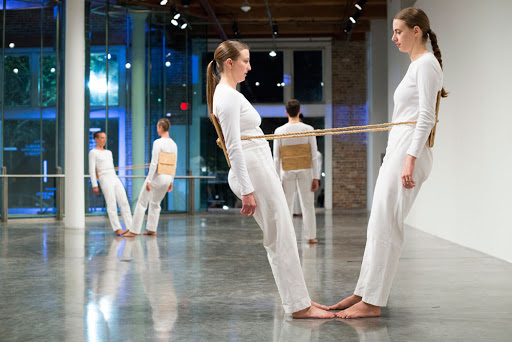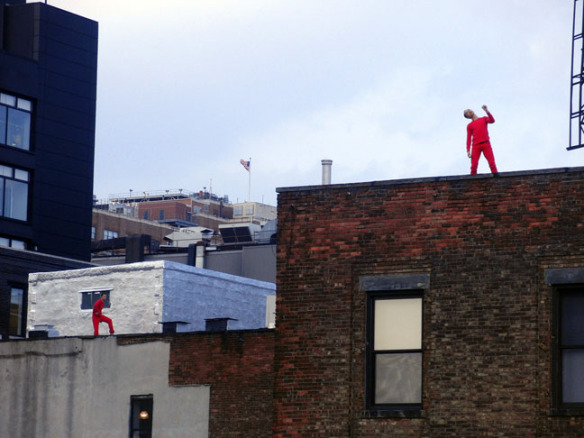Her Roof Piece (1973) in New York City employed 15 dancers, each on a different Manhattan roof, following each other’s sequence of movements while the audience watched from another roof.
During this period Brown developed several experimental pieces. Her first, Leaning Duets and Falling Duets, choreographed from 1968 to 1971, involved dancers supporting and testing each other’s strength.
In Accumulating Pieces (1971) the dance was built up from a series of discrete gestures, each gesture building on the previous one.
LATEST WORKS:
In the late 1970s and ’80s, Brown began to incorporate design and music into her pieces and
to work in traditional theatres instead of outdoors. Reclassified as
a postmodern choreographer, she presented such pieces as Glacial Decoy (1979), which featured a backdrop of black-and-white photos by Robert Rauschenberg; Set and Reset (1983), with costumes and film clips by Rauschenberg and a score by Laurie Anderson; and If You Couldn’t See Me (1994), a solo in which Brown’s back is to the audience for most of the performance. Her later works include M.O. (1995), which was set to Johann Sebastian Bach’s The Musical Offering, and Present Tense (2003), a collaboration with artist Elizabeth Murray that included music by John Cage. I love my robots (2007), which featured robots made of cardboard tubes, drew praise for its wit and poignancy. Brown directed several operas and choreographed Carmen (1986). Suffering from vascular dementia, she created her last dance in 2011. Her numerous honours include a MacArthur Foundation fellowship (1991) (Anderson, 2021)
Complete the Kahoot Quiz with the information that you have in the above section about Trisha Brown. 
Link here: Kahoot Quiz
American choreographer
Trisha Brown, (born November 25, 1936, Aberdeen, Washington, U.S.—died March 18, 2017, San Antonio, Texas), American dancer and choreographer whose avant-garde and postmodernist work explores and experiments in pure movement, with and without the accompaniments of music and traditional theatrical space. Brown studied modern dance at Mills College in Oakland, California (B.A., 1958). Her style began developing after she met choreographer Yvonne Rainer in 1960; together they
became founding members of the experimental Judson Dance Theater in 1962. From 1970 through 1976 Brown was also a founding member of the improvisational Grand Union, and in 1970 she formed her own company, the Trisha Brown Dance Company, which was an all-female dance company until 1979.
Brown was influenced by the avant-garde style developed most prominently by Merce Cunningham during the 1960s and ’70s. Although grounded in Martha Graham’s technique
(Cunningham had been a student of Graham’s), avant-garde dance evolved as a reaction to the more structured and formal classical ballet and classical modern dance. Avant-garde dancers believed that dance could be divorced from music, that dances could be themeless and plotless, and that dance could also reflect the dancer’s internal rhythms.
